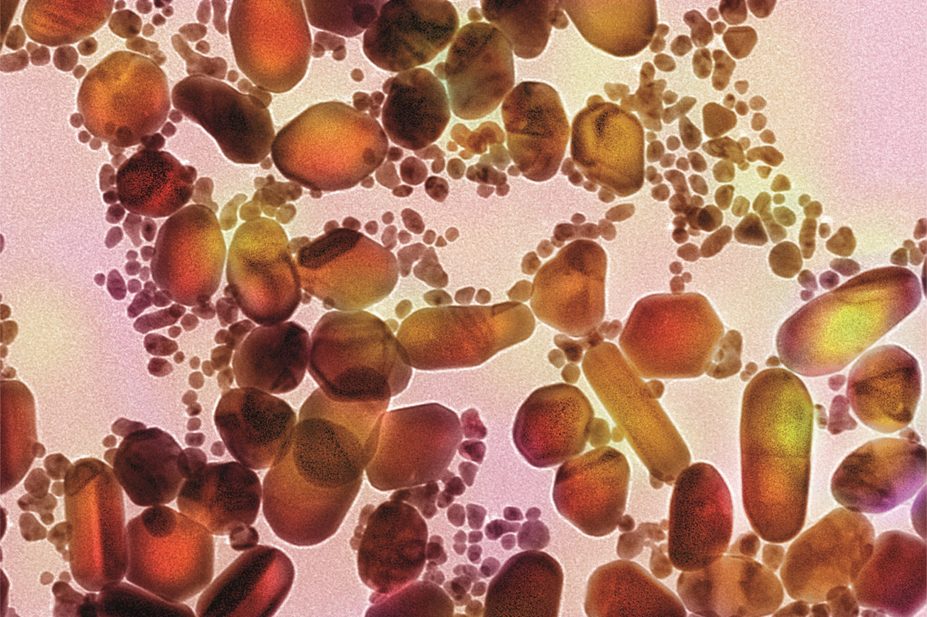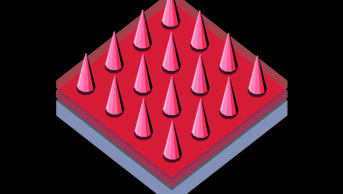
David McCarthy / Science Photo Library
Gold nanoparticles (defined as ≤100 nanometres in size) hold promise as drug-delivery systems because of their ability to penetrate and interact with the skin.
Research published in Small
[1]
(online, 7 October 2014) offers new insights into how the physicochemical properties of gold nanoparticles influence their ability to penetrate the outer skin barrier (epidermis) and migrate into the deep layers (dermis and hypodermis).
When incubated with human or mouse skin explants, positively charged nanorod-shaped nanoparticles were two to six times more effective at penetrating skin than negatively charged particles, reveal Antonios Kanaras, from the University of Southampton, and co-authors. Nanoparticles coated with peptides also penetrated in larger numbers compared with standard pegylated particles and were detected in both epidermis and dermis.


